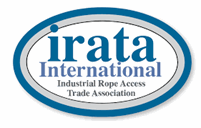
You are visiting the Canada Kee Safety website from United States. Would you like to go to the United States site?
Ropes have been used for a myriad of purposes for many thousands of years. From the construction of the pyramids to sailing boats, ropes have helped us build extraordinary structures and go about basic maintenance tasks for as long as we can remember. Humans have been using ropes for ascending and descending for a very lengthy time but as buildings grew taller and taller, the necessity for a safe system of rope access became increasingly important.


Back in the early 1900s, health and safety was a non-existent concept and construction workers went about their work devoid of ropes or harnesses. It was not a profession for the faint-hearted! Thankfully, we have come a long way since the days of fearless (or crazy) construction workers relying on their own balance to avoid plummeting to their death.
As buildings grew higher and the offshore oil and gas industry expanded, these hostile environments became ever more problematic for workers to access. Scaffolding was often impractical and exceedingly expensive, therefore a radical new solution was needed. Enter rope access!

Rope access as we know it today began in the early 1980s, adopting a technique originally developed by cavers. Nevertheless, their system only used one rope and there was a necessity to add an extra level of safety when used for working at height. As a result, a back-up security rope was added for fall protection purposes - and so began the system we are familiar with today.
Rope access quickly became the standard approach to reaching previously inaccessible areas. With exceptional safety records and the advantage of being highly cost effective, rope access took the working at heights industry by storm. Furthermore, with the array of training options on offer, almost anyone can learn the skills required to safely engage with rope access techniques. There is no longer a need for a mountaineering background, which has broadened the reach of the industry and enabled many different types of tradespeople to apply their skills to working at height scenarios.

 The Industrial Rope Access Trade Association (IRATA) was formed in 1987 by a handful of the world’s leading rope access companies, in order to solve maintenance problems in the offshore oil and gas industry. It was formed with the primary objective of providing a safe working environment for the rope access industry.
The Industrial Rope Access Trade Association (IRATA) was formed in 1987 by a handful of the world’s leading rope access companies, in order to solve maintenance problems in the offshore oil and gas industry. It was formed with the primary objective of providing a safe working environment for the rope access industry.
Since then IRATA has grown to be the leading authority on industrial rope access, with over 570 member companies across the world. It is due to the rigorous regulations and high standards of training provided by IRATA that has propelled the rope access industry into the success it is today.
